You have no items in your shopping cart
Full Guide - Laboratory Heaters and Chillers - Styles and Power Capacities
- Posted on
- Posted in Buyers Guides, Chilling Solutions, Heating Solutions
- 0
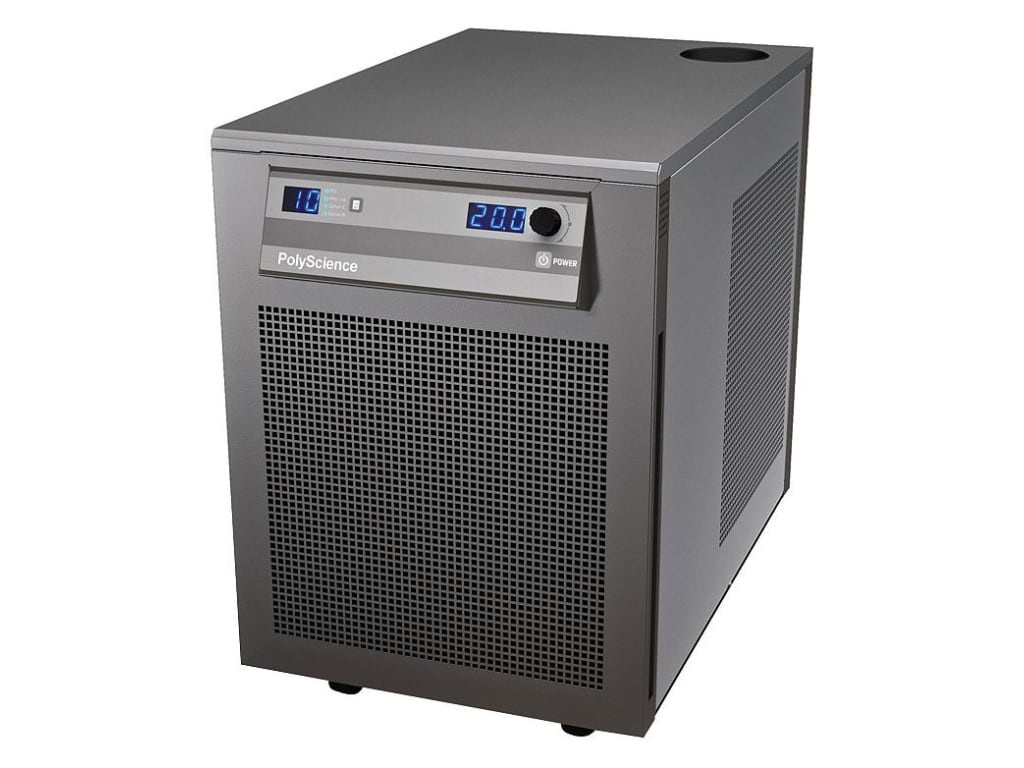
This blog will go over how to find a proper heater or chiller with appropriate power for your applications.
Here are some chillers and heaters that we will discuss in this article.
|
Temperature Range |
Estimated Size of Vessel unit can connect to |
Heater/Chiller |
|
-90c to 250c |
20 gallon |
|
|
-5c to 25c |
20 Gallon |
|
|
-20c to 35c |
20 gallon |
|
|
25c - 150c |
10 gallon |
|
|
35c - 200c |
20 Gallon |
Introduction to Recirculating Chillers and Heaters
In this article, we will go over the different types of recirculating laboratory heaters and chillers. There are many specifications to consider such as the main types of units, power capacities, reservoir volumes, styles of operation, applications, and how to even combine a heater and chiller.
Recirculating Heaters and Chillers
An important piece of laboratory equipment, heaters and chillers play a vital role in daily operations and selecting the correct one is key. If you plan to pump your heated or chilled fluid through an external vessel, you will be using a recirculating model.
Power capacities
The most important thing to note about the model you are selecting is its power curve. Each manufacturer has a chart or table that states cooling capabilities at a certain set temperature. Every unit will have a clearly advertised temperature range and you will start your search here. The actual achievable temperature ranges are the next important thing to be aware of. Just because a chiller states it can reach -80 degrees Celsius, does not mean it is strong enough to do so. The size of the vessel and the heat load the chiller will be fighting directly influences what temperature you can reach. Checking the Kw heating or cooling capacities at a set temperature will show how strong that unit is at that temperature. See the spec chart for one of our exclusive Polyscience models below:
Polyscience 1.5HP Chiller with Turbine Pump, Air-Cooled, 230V, 60 Hz, -20 to 25°C
|
Part Number |
3860T56A1C0D |
|
Maximum Pressure (psi) |
100.0 |
|
Maximum Pressure (bar) |
6.90 |
|
Maximum Pressure Flow Rate (gpm) |
3.50 |
|
Maximum Pressure Flow Rate (l/min) |
13.2 |
|
Cooling Capacity @ +10°C (W) |
4420 |
|
Cooling Capacity @ +20°C (W) |
5200 |
|
Cooling Capacity @ +30°C (W) |
5980 |
|
Heater Wattage |
1000 |
|
Electrical Requirements (VAC/Hz/Ph/A) |
230/60/1/21.1 |
The highlighted areas reflect the electrical cooling power at different temperatures. Every manufacturer will have a chart like this, especially for chillers. Learning to understand it is key to selecting the proper unit.
See how the power curve drops as the temperature is lowered? That is how “strong” the chiller is at each temperature. At 30 degrees Ceclius, you have about 5.98kw chilling power, while at 10 degrees Celsius it has about 4.42 Kw chilling power. As you set the chiller lower, it has a harder time maintaining colder temps since it is working harder to reach colder settings.
This is why it is so important to understand Kw chilling power to make sure a chiller will be able to operate at the temperatures you need.
Cooling Capacities
If a chillers operational temperature ranges from -20c to -80c, but the Kw chilling power at -80c is so low, say 0.7Kw cooling, it will be impossible to reach temperatures this low when fighting a heat load or trying to chill a large vessel.
Depending on the ambient temperatures and heat load the unit will have to fight, you can estimate what temperature the unit can actually reach. When used in a hotter room, an air cooled chiller will not be able to reach its maximum chilling capacity because it is fighting the ambient temperature of the warm room. Ideally, a chiller should be stored in a room with the ambient temperature around 25 degrees Celsius (77f).
A chiller that has 2.0kw of chilling power at -20c is a good rule of thumb, this is a strong chiller that can fight moderate heat loads while still reaching -20c fairly quickly, within an hour or so even on larger vessels. If another chiller has 0.7kw chilling power at -80c, it might take several hours to get that low, and there would need to be no heat load the chiller would have to fight. So when performing an exothermic reaction that releases heat energy, the chiller may struggle at such a low cooling capacity and the temperature will rise as it loses the battle against the heat load. See the spec chart for a Huber Unistat - 905 below.
|
Range |
-90 to 250 °C |
|
Stability |
±0.01°C |
|
Heating Capacity |
6 kW |
|
Cooling Capacity |
at -80c = 0.7 kW |
|
Cooling |
Air cooled |
|
Refrigerant |
1st stage R507, 2nd stage R23 |
While this is indeed one of the most popular and powerful heater chiller combo units on the market, it still has low Kw power at -80c. Although this is not exactly a problem and there is nothing inherently wrong with this model, this unit will take a few hours to get this low. Even when there is no heat load and a low ambient room temperature, users should expect about 2-3 hours of chilling time before the chiller reaches -80c.
It is also very important to note that when trying to reach temps this low, a double jacket vessel is basically required. The first jacketed layer is where all of the chilling fluid is pumped through to cool the vessel. While the second jacketed layer, or outer layer, will be a vacuum jacket. Meaning the outermost layer will be vacuum insulated with no air. By doing this, the inner chilling layer is insulated and will not lose energy to the surrounding environment.
Does all this make sense? When initially shopping for a chiller, always check the specs for their power capacity to get an idea of how strong the unit is at your desired temperature. Any questions about how well a unit will work for you? Call Goldleaf directly and we can answer any questions about how a chiller will work for your system.
Heating Capacities
The concept of Kw power also directly translates to heaters. If you are trying to heat up a cooled solvent enough for it to evaporate (depending on how much solvent is being used and the temperature it sits at) a strong heater will be needed.
A heater with 4kw of power at 100c will be able to maintain a constant temperature when dealing with chilled solvents like butane, alcohol, etc. even on larger vessels with around a 20 gallon capacity. The need for heating power is entirely dependent on your applications.
If you are trying to maintain a constant temperature just above ambient, you will not need a very high Kw heater especially since it is not being applied to any chilled substance. Once you have a general idea of what works, it is easy to guess if 2kw or lower will be suitable or if you need something stronger.
Basically, the amount of Kw power will determine the availability of heat you can provide to your system and is just as important as selecting the proper temperature range to ensure proper results. Feel free to call or email for help working out the best heater for your situation.
Reservoirs and Pumps
A heater and chillers reservoir is not as important as its pump. Most units will have a small bath that will never match the volume of the vessel you are trying to heat or cool. But, as long as the pump is strong enough to push through the vessel and recirculate back to the unit, that will be sufficient.
But how do you fill a large vessel with a small recirculating bath? As the unit pumps through the vessel, pour more of the heating or cooling fluid into the bath until you are able to achieve full circulation without the bath going empty.
A pump that can move 10 liters a minute can suffice for large vessels around a 20 gallon capacity. Some units even move upwards of 50 liters a minute. Turning the pump up higher raises internal pressure on your vessel, so if you are connected to a jacketed glass vessel, make sure the pressure is not so high it can break your container.
For example, our single jacketed glass reactors have a maximum internal jacket pressure of 29psi, and a nominal pressure of 25psi. It is important to find the maximum jacket pressure for your glass or stainless steel vessel to make sure there are not any failures in the outer layer. Make sure the entire jacket is filled at all times during recirculation while the fluid is moving fast enough it does not fluctuate in temperature by spending too much time away from the source heating or chilling.
How will you know what pressure your heater or chiller is pumping at? Most chillers will have a small pressure gauge on either the front or back of the unit and tell you the internal psi of the fluids being pumped. Some chiller manufacturers even carry external pressure reducers that can regulate pressure from outside the unit to more accurately throttle pressure. These types of reducers can be easily designed for most connections and we can help set one up if needed.
Every setup is unique and there is no clear answer for the variety of systems and chillers on the market. These are basic guidelines for commercial operations. Please call Goldleaf directly to consult if a certain unit will work for your needs.
Styles of Chillers
Recirculating chillers take heat from one system and transfer that heat to an outside source, such as surrounding air, or facility water supply and this is how cooling is achieved. Here are a few of the main chiller styles that are on the market today.
Cascade Chillers
When dealing with chillers that can reach extremely low temperatures below -20c, these are more than likely cascade chillers.
A cascade chiller uses multiple refrigeration cycles to reach lower and lower temperatures. By using multiple compressors and different types of refrigerant, these chillers compound over each internal system to get the temperature lower and lower.
One compressor and refrigeration system will reach -20c, then pump the chilling fluid into another part of the chiller that will reach say -40c, and so on until the desired temperature is reached. As stated above, the amount of time it takes to reach extremely low temperatures is determined by the Kw power. So it may take numerous cycles over several hours before the chiller reaches its lowest possible temperature.
Air cooled
Air cooled chillers are the most common. They do not require much planning ahead of time and can easily be installed into most facilities as long as the ambient temperature stays below a certain point, usually 80 degrees Fahrenheit. The chiller will remove the heat from the vessel you are chilling and pump this heat into the air, thus cooling the system. As long as ambient air temperatures do not get too high and there is sufficient air flow, there should be no problem running one or multiple chillers in the same room. When using multiple units, make sure they are spaced far enough from each other to prevent one unit overheating the unit next to it. This Lauda Ultracool Circulation Chillers - UC4 is a great example of a powerful, air cooled model that can easily be implemented into most existing laboratories without much installation. As long as ambient temperature is low enough and there is plenty of air flow, these units will work in most environments.
Lauda Ultracool Circulation Chillers - UC4
|
Volume water tank L |
19 |
|
Cooling output at 10 °C kW |
4.9 |
|
Temperature stability ±K |
2 |
|
Pump pressure max. bar |
3.4 |
|
Pump flow max. L/min |
42 |
Water cooled
Water cooled chillers are more efficient than air cooled, but require a little more planning ahead of time. The heat removed from the system is dispersed through a constantly flowing water stream pumping through the chiller. The heated water is then pumped into a drain and disposed of or sent through another chilling system such as a rooftop cooling tower or heat exchanger, keeping this cycle going throughout the operation of the chiller. It is important to make arrangements for water cooled units as the facility is being built to allow for the needed plumbing. When planned for and built out properly, water cooled chillers can be placed in sequence right next to each other, even in tight spaces.
Styles of Heaters
Heated temperature control can be precise and efficient. Depending on the application, what results you are trying to achieve, and what your budget is, you can decide what type of heater will be best.
Open Bath Heater
An open bath heater is mainly used to immerse whatever is to be heated. Flasks, bottles, samples, etc., can be placed inside the water bath depending on its volume. Most open bath heaters also have a recirculation pump for use on external vessels. Thus giving you two types of heating units without having to spend the money on the different styles.
As reservoir volumes increase, the less responsive the temperature control becomes. So for a large bath, it may take a long time to change the temperature a lot, such as going from -40c to 100c. These are usually lower powered units meant for smaller vessels. Here is a 15L Open Bath Heater from Polyscience that uses a pressure pump to circulate water. This is not a very strong pump and will be useful for smaller heating operations that need to maintain a temperature just above ambient room temperature. Also note that the Kw heating power is not very high either, as for open bath heaters they do not usually have to be.
Polyscience 15L Stainless Steel Open Bath
|
Working Temperature Range °C |
Ambient +10° to 135° |
|
Temperature Stability °C |
±0.005° |
|
Fluid Optimization/Specific Heat Tuning |
Automatic and/or user-adjustable |
|
Temperature Calibration Capability |
10-point |
|
Working Access (L x W x D) (cm) |
21.2 x 27.6 x 14 cm |
|
Pump Type |
Pressure |
|
Maximum Pressure (psi) |
2.3 |
|
Maximum Pressure (bar) |
0.16 |
|
Maximum Pressure Flow Rate (gpm) |
3.60 |
|
Maximum Pressure Flow Rate (l/min) |
13.5 |
|
Heater Wattage |
1100 |
Closed System Heater
A closed system heater uses a smaller bath, stronger heat element, and more powerful pump to heat external systems. Since there is not a large open bath, a closed system heater can quickly raise temperatures. These heaters are used for much larger heating applications, especially with their high Kw heating power and stronger pump. This Huber Kiss 202 Heater is meant for medium sized applications, likely heating vessels with 10-15 gallon capacities. See the higher pump rate and heating kw power meant for heating external vessels.
Huber Kiss 202C Recirculating Heater
|
Range |
(-30) 45 to 200 °C |
|
Stability |
±0.05°C |
|
Heating Capacity |
2 kW |
|
Pressure max |
14 L/min at .25 Bar |
|
Suction pump max |
10.5 L/min at .17 Bar |
Closed System Heater - Chiller
Although they are more expensive, a closed system heater chiller is much more efficient at controlling temperature changes since it uses a smaller bath size and can either raise or lower temperatures as needed. This rapid change can even stress glassware, so be cautious. Some closed systems limit heat change to 1 degree Celsius per minute to prevent fracturing glassware. For these types of models, a specialty heat transfer fluid is required. Fluids that can withstand high temperatures while still being viscous at low temperatures are key. Below is another Huber Unistat model, a very common air cooled heater chiller combo that is standard for applications that require both chilling and heating.
|
Range |
-85 to 250 °C |
|
Stability |
±0.01°C |
|
Heating Capacity |
2 kW |
|
Cooling Capacity |
at 250°C/1.3 kW, at -80/.2 kW |
|
Cooling |
Air cooled |
|
Refrigerant |
1st stage R507, 2nd stage R23 |
|
Pressure max |
40 L/min at .9 Bar |
|
Connection |
M30x1,5 AG male |
|
Viscosity |
50 mm^2/S |
Combining a Recirculating Heater and Chiller
When shopping for heater chiller combos, you will find units that can do both cooling and heating. These units are usually very expensive since they are basically two machines combined into one. A little known trick to combat this high price is to combine a separate heater and chiller so they can be used together.
To explain further, it is more cost effective to use a chiller to cool a separate heater and use that as a heater/chiller combo unit rather than buying one model that can do both. Sounds confusing? Let's get into it.
A recirculating heater uses a quenching coil in the bath to cool the fluid and keep it at a consistent temperature. This coil can be tapped into to perform chilling as well. By taking an external chiller and hooking it up to this coil, users can pump chilled fluid into the coil and chill the heating fluid. Set the heater as low as it can go so it does not kick on the heating function. If powered on the heater will still use the pump to move the chilled fluid from the bath into the system. This method is great for chilling close to ambient room temperatures. For more rapid temperature changes or more rapid cooling power, the coil can be replaced with a larger coil to create more surface area.
Why is this useful? Well for starters it is much less expensive than buying a high end heater chiller combo unit that has cooling and heating capacities that match your needs. Also, you will only need one connection to your system that uses one type of fluid, rather than having a manifold that can switch between a heater and a chiller and risk mixing different fluids. Since heating fluids are usually silicone based, while chilling fluid is usually glycol based, it is much easier to use one fluid that can perform either way.
Applications
There are a variety of categories, fields, and systems that would use recirculating chillers and heaters. From chemical reaction control, to spectroscopy, and laboratory automation. Many chemical reactions and separations must be done within a consistent temperature range, making recirculating chillers or heaters ideal.
In spectroscopy, chillers are used to keep high powered light sources, such as lasers, within acceptable temperature ranges. Recirculating chillers will remove the heat emitted by these light sources and keep the equipment cool.
For lab automation, there is no limit to how long a heater or chiller can be on for. Meaning a user can set the temperature ranges and let the unit automatically adjust as needed. Thus a consistent temperature can be held 24/7 without monitoring.
Conclusion
There are a number of recirculating chillers, open bath heaters, and more for a variety of uses. Be sure to understand Kw heating and cooling power along with pump capabilities. A general understanding of these specifications for your application will help guide your purchase.
Whatever category of heater chillers you need, Goldleaf can help. We can calculate the exact amount of power you will need, the best type of fluid, and how to plan your system build out. Call us today for more information about what models are best for you.



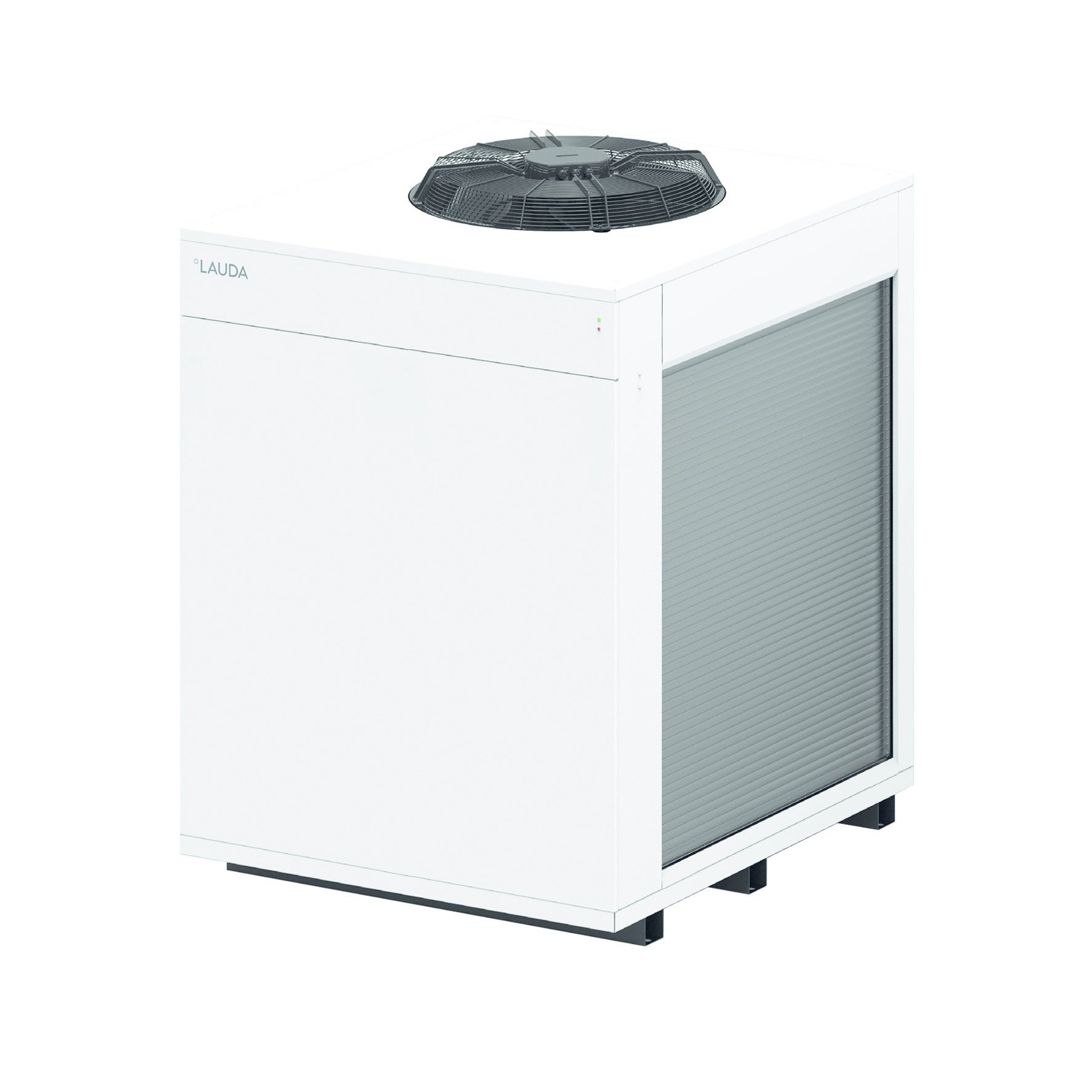
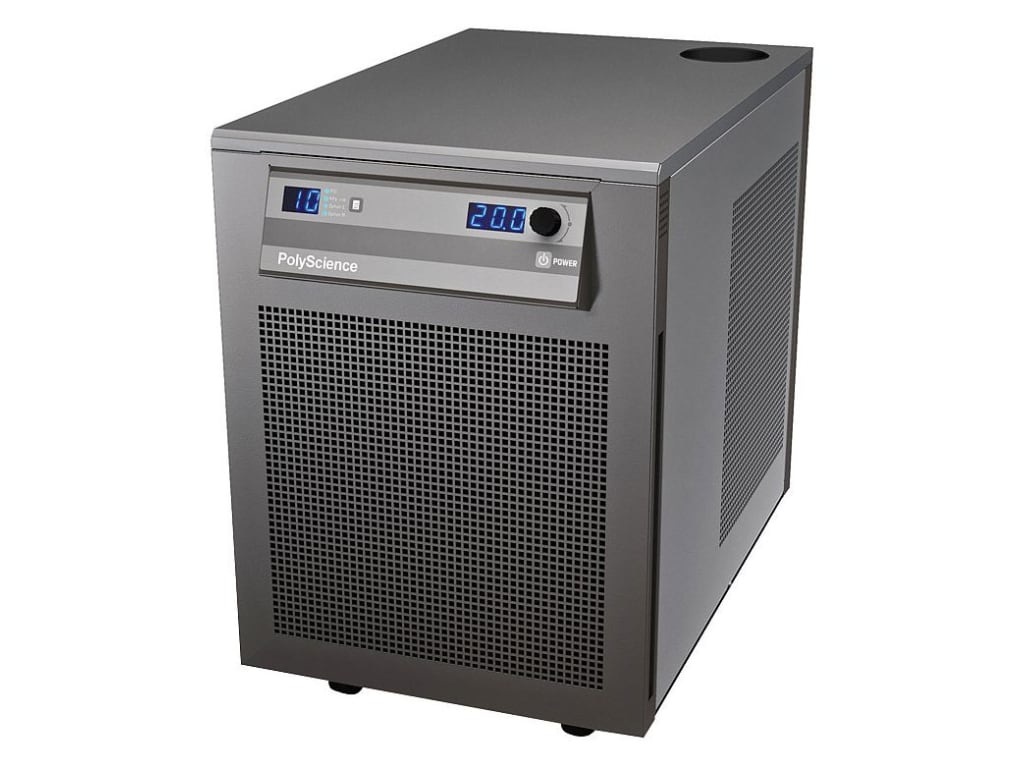
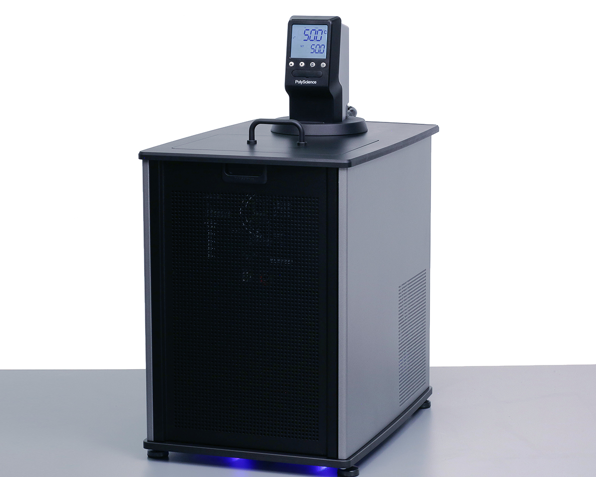
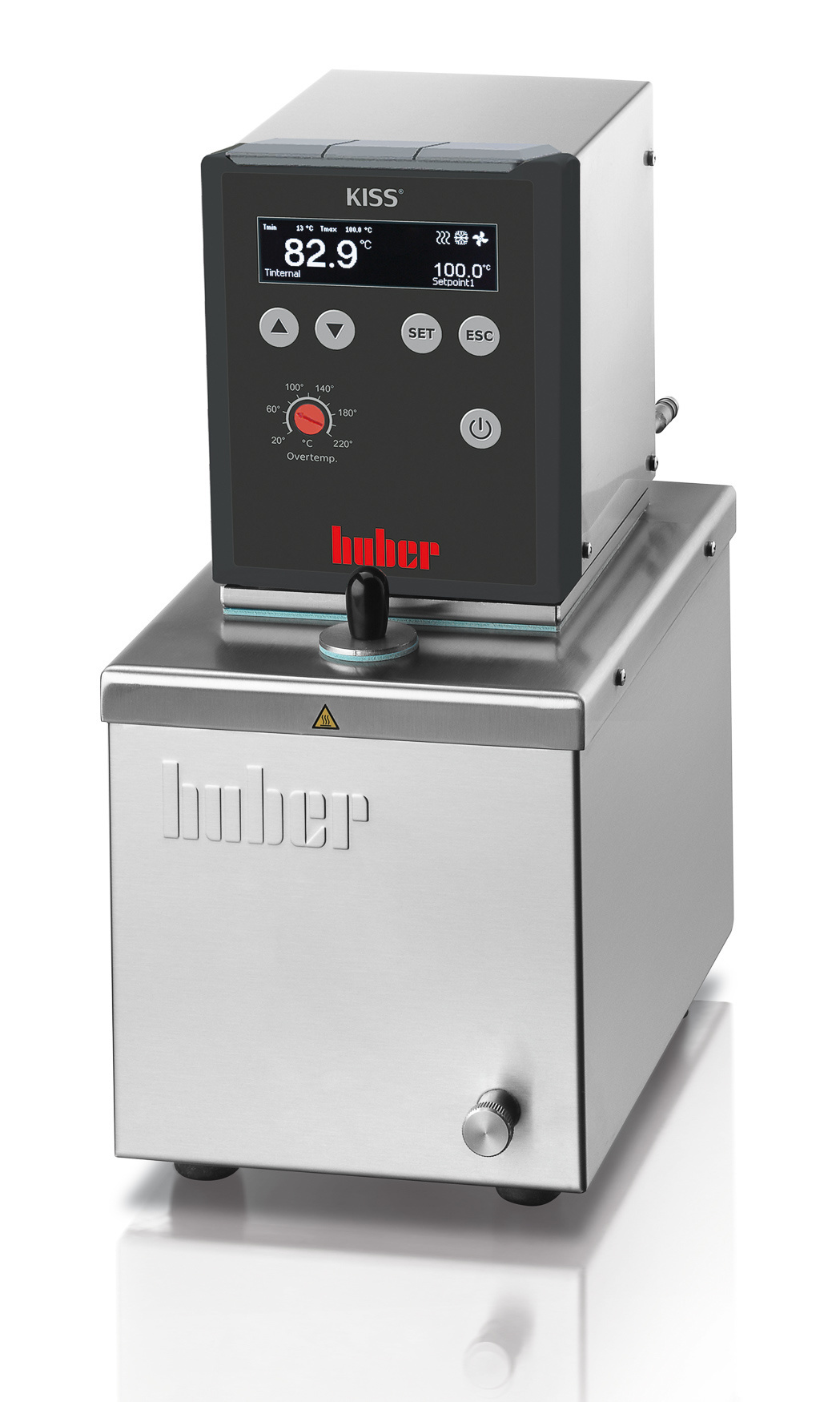


Comments
Be the first to comment...